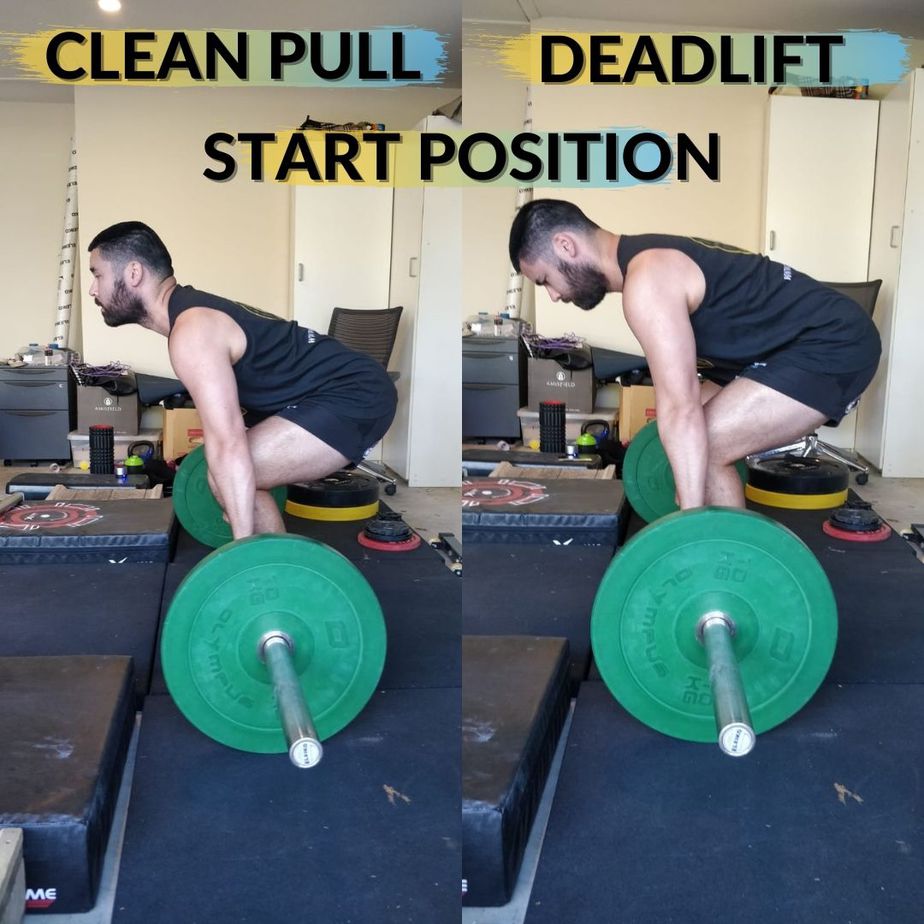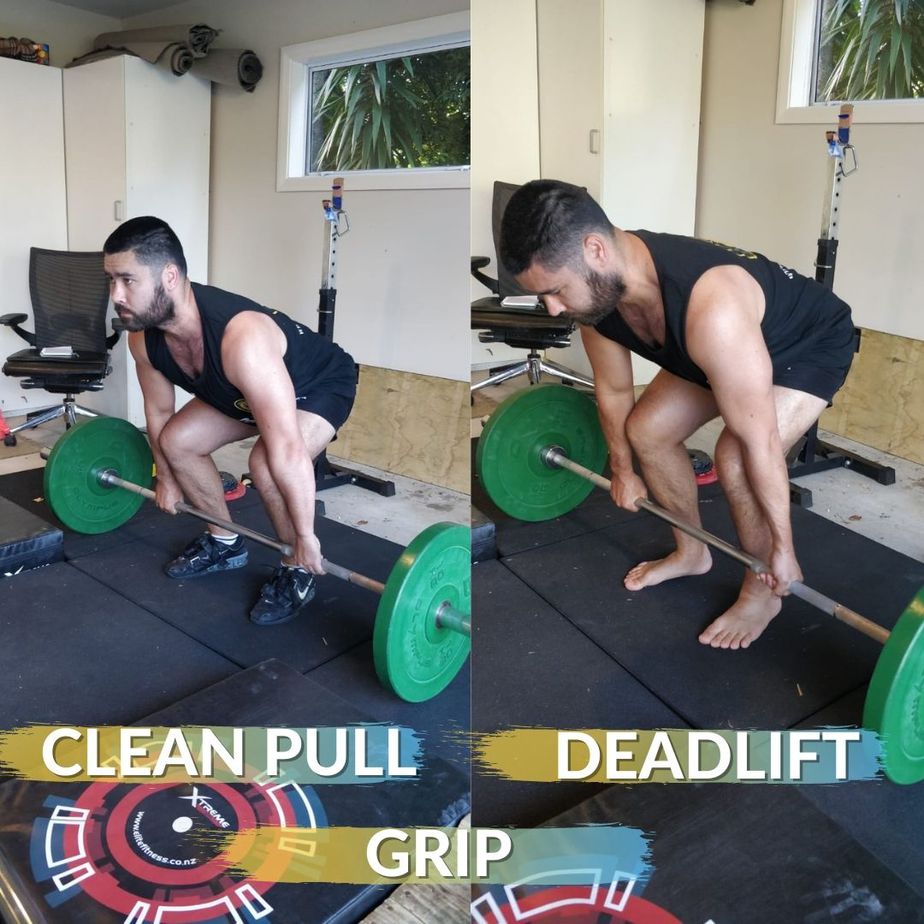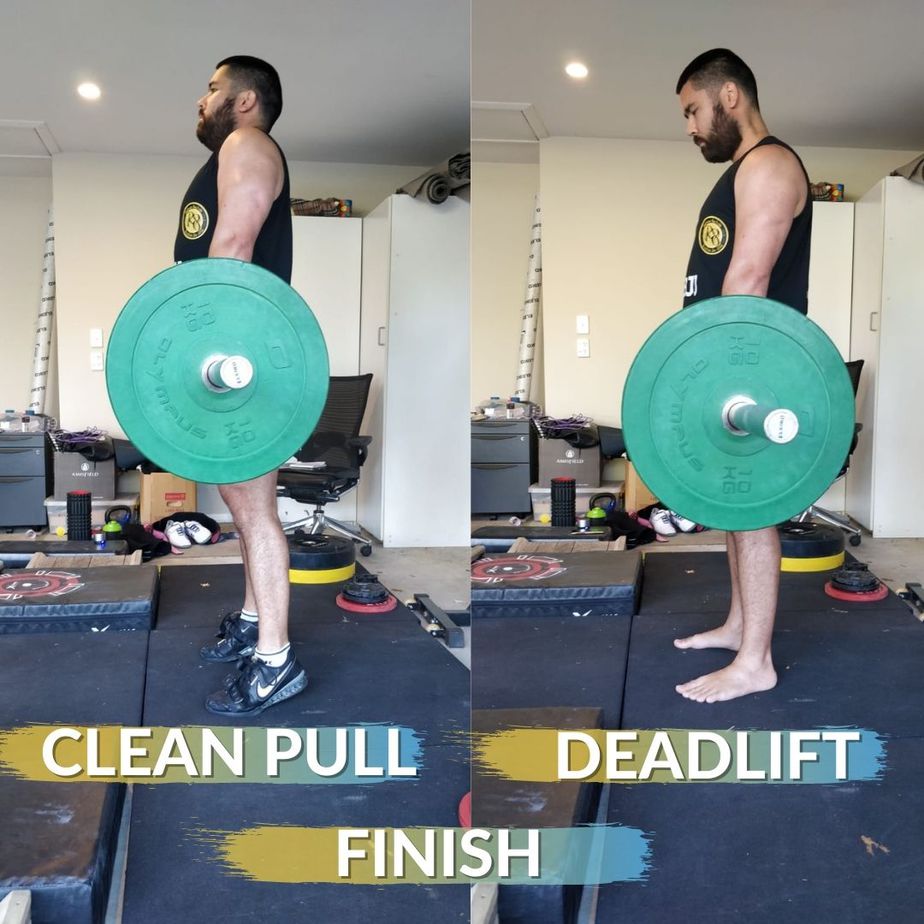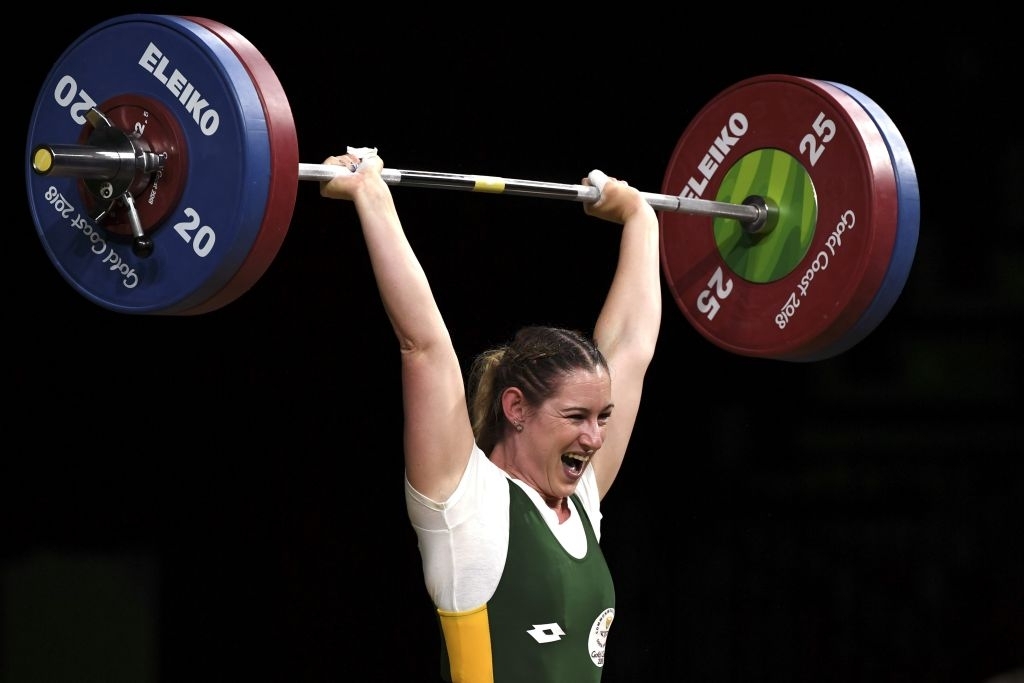The clean pull and deadlift and two fundamentally different exercises even though they are often used interchangeably as exercises to carry over to the clean and jerk.
The deadlift is performed with bodyweight behind the bar and toward the heels to get the hips through and the torso upright as fast as possible once past the knees.
The clean pull has the shoulders over the bar and the bodyweight in the middle of the foot where the goal is to keep the back angle the same for as long as possible during the pull and to finish with triple extension of the hips, knees, and ankles.
Before I dive into the key differences between the clean pull and deadlift, let's quickly define what a clean pull and a deadlift are so there is no confusion between them.
Table of Contents
What Is The Clean Pull?
The clean pull is a specific accessory exercise for the clean in Olympic Weightlifting. The clean pull strengthens the pull of the clean by lifting heavier loads than the 1RM clean.
The only way the clean pull will transfer to the clean is if the positions are exactly the same as when performing the clean.
A big mistake that some Weightlifters make is going too heavy when performing clean pulls and losing their clean positioning turning the exercise into a more deadlift style lift. Unfortunately, this does nothing for the clean.
What Is The Deadlift?
The deadlift is one of the big three movements in Powerlifting. The number one goal is to lift as much weight as possible from the floor to standing upright. The deadlift is not used in Olympic Weightlifting for the reason mentioned above.
Difference Between The Clean Pull vs Deadlift
Starting Position
There are subtle differences between the starting position of the clean pull and deadlift. While they may seem like the same movement, the setup of each lift is based on the goal of the exercise.
The starting position in the clean pull places greater emphasis on the quadriceps because of how the bodyweight and shoulders are positioned over the bar. This creates a position with the knees forward and a positive shin angle.
The deadlift places a greater emphasis on the glutes and hamstrings as the starting position has bodyweight in the heels.
The shin angle is slightly less than the clean pull with the hips setting in a slightly higher position to take advantage of the tension in the hamstrings and glutes.

You will notice the big difference in the back position. The clean pull is performed like the clean with a big chest and the eyes looking slightly up. This creates a flat back posture from the thoracic spine down to the lumbar spine.
The deadlift on the other hand will be flat at the lumbar spine or lower back but the thoracic spine does not need to be extended like in the clean pull.
In fact, an extended thoracic spine can be a disadvantage as it increases the distance you need to pull the bar.
The head position in the deadlift is kept neutral. This isn’t a hard and fast rule. Head position is a personal preference with the deadlift.
Tightness in the deadlift starting position is created by pulling up and back against the bar as a counterbalance to find a locked-in position.
Whereas tightness in the clean pull is created by pulling up against the bar but not back.
Grip
Grips can differ greatly between the clean pull and deadlift. But they can also be the same. For the clean pull, the grip will either be the hook grip or a regular double overhand grip if the weight isn’t too heavy.
However, most Weightlifters will perform clean pulls with straps to save their thumbs for heavy snatches and cleans.

The deadlift can also be performed with a double overhand or hook grip. However, the double overhand will limit the load that can be lifted and the hook grip can be painful and has a long break-in period to get over that pain.
The mixed grip (as shown in the picture) is the most common grip used when deadlifting as it prevents the bar from spinning out of your hands. The double overhead allows the bar to spin through the fingers as the load gets heavier.
The mixed grip prevents this spin and secures the barbell in the hands. However, over time this may develop imbalances so it's important to change the way you mix grip now and then.
First Pull (Floor To Knee)
Both the clean pull and deadlift start with a push from the legs to initiate the pull from the floor.
Once the barbell reaches the knees in the deadlift, the weight of the body is further behind the bar as it is loaded through the hamstrings, glutes, and lower back. The pressure on the foot is heavily on the heels to maximally engage the posterior muscles.

You may also notice the angle of the back has become more vertical in the deadlift compared to the start position.
The clean pull position on the other hand still has the weight of the body over the bar and the back angle is exactly the same as the starting position. A very large distinction between the clean pull and deadlift.
Further, the head and eyes are up to lift the chest during the pull whereas the back position in the deadlift remains neutral.
Second Pull (Knee To Hips)
The number one goal of the deadlift during the second pull is to get the hips through as fast as possible while continuing to push with the legs. The goal of the clean pull during the second pull is to continue pushing through the legs and to stay over the bar as long as possible before bringing the body upright.
The Finish
The deadlift is completed when the hips are locked out and the athlete is standing up tall. The clean pull is finished with a shrug of the shoulders and a triple extension of the hips, knees, and ankles.

The barbell is propelled as vertically as possible in the clean pull where the deadlift ends at the hips.
Footwear
Footwear differs greatly between the two exercises as you may see in the pictures. Deadlifts are best performed in flat-soled shoes or even bare feet. This allows you to sit back into the big glutes and hamstrings.
Clean pulls are performed in Weightlifting shoes with a raised heel which aids in setting up the over-the-bar posture and positive shin angle.
Speed
The speed of the clean pull can be thought of as “fast, faster, fastest” which relates to each phase of the pull.
The first pull to the knee is fast, the second pull to the hip is faster, and the finish is the fastest part of the lift.
This encompasses the acceleration profile of the clean pull. It’s all about accelerating the bar faster and faster throughout the exercise.
The deadlift on the other hand is maximum effort throughout the entire lift. There is no speeding up at certain points of the deadlift. Otherwise known as “grip it and rip it.” This is something you want to avoid when using the clean pull.
Should You Use The Deadlift For Olympic Weightlifting?
The conventional or sumo deadlift should not be used for improving the sport of Weightlifting. The deadlift has subtle differences to the clean which can cause faults in your technique.
However, there is an exercise named the clean deadlift which is essentially performing a clean pull without the violent triple extension to finish. So you are still drilling the correct positions as you would in the clean.
Summary
To sum up the main differences between the clean pull and deadlift:
Stuck In A Rut?
The LBEB Underground serves to support you with your strength and performance training goals by industry leading experts.


 (@powerfulpretorius)
(@powerfulpretorius)